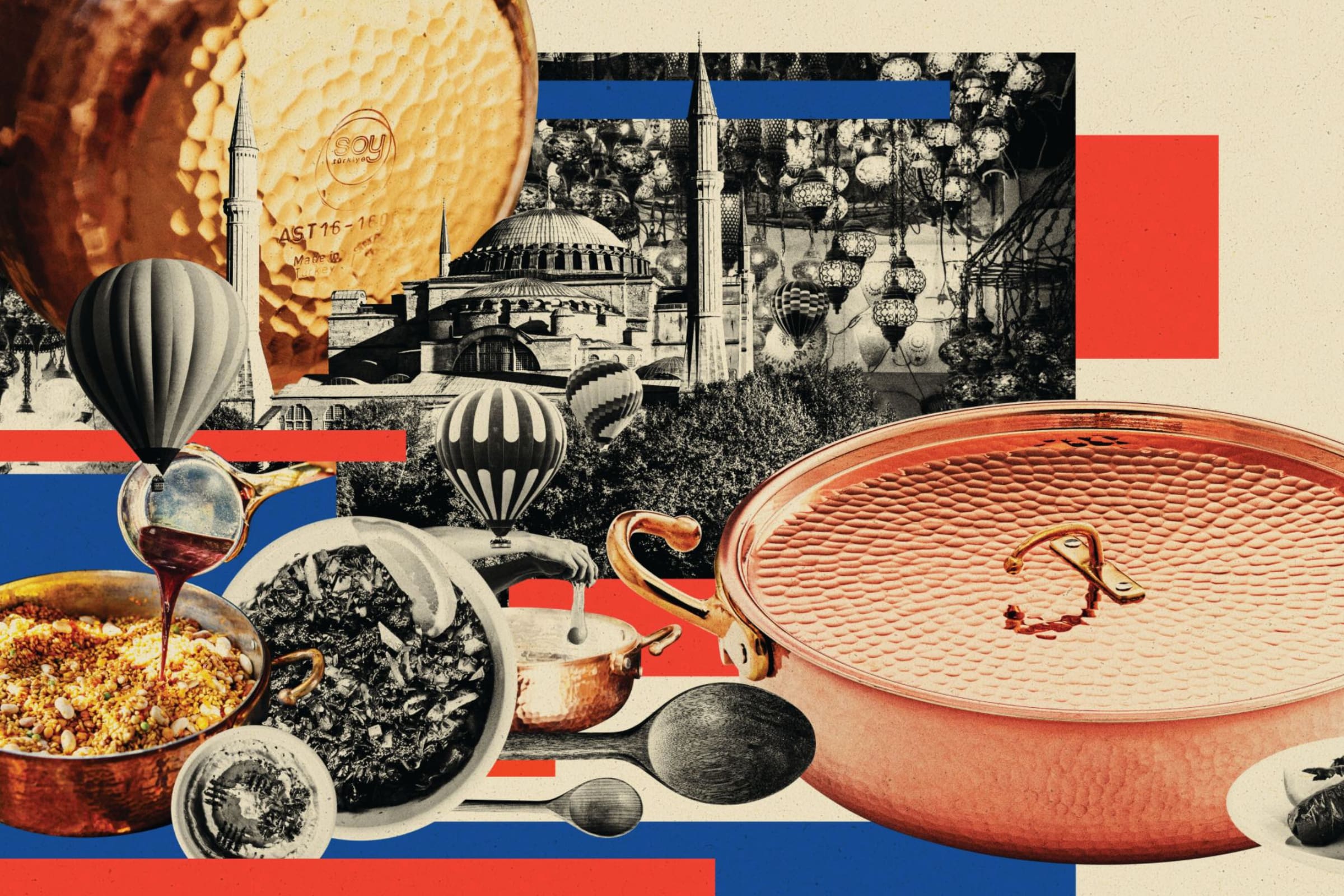Confession: I’ve been pulled aside at an international airport due to the inherent danger of unidentified cookware not once, but twice.
The first time I got flagged was in 2015. After deciding to take a year-long Asia trip, I was less concerned about what clothes would see me through the humid months than how I was going to make coffee every day. Gritty scoops of Nescafé Gold weren’t going to cut it, so I did what any self-appointed barista would do: stuffed a slim coffee grinder inside a portable AeroPress coffeemaker.
In case you’re unfamiliar, an AeroPress functions like an inverted French press, only it’s much smaller and bears an unfortunate resemblance to a pipe bomb when passing through an x-ray machine. When an alarmed security official pointed this out, I proceeded to demonstrate how its hand pump works. He responded with a raised eyebrow and a quizzical look that said, You know you’re a total nerd, right?
Indeed I am, especially when it comes to food. It’s why I’ve taken intensive three-day courses on fermentation. Lost hours (nay, years) of my life rooting out must-try restaurants around the world. And treated our dining room like a two-person bistro for decades, complete with daily cookbook selections and rotating specials.

Illustration by Klawe Rzeczy
An obsession with cooking techniques and totally unnecessary tools also explains why I saw nothing wrong with buying an exquisite copper pot at Istanbul’s centuries-old Grand Bazaar and bearing its burdensome weight on not one but seven flights between Turkey, Georgia and the United States last fall.
While most screeners ignored its land mine–like shape, it piqued the interest of one curious worker at the Tbilisi airport. After removing the sweatshirt-wrapped rondeau — a wide and shallow wonder normally reserved for serious kitchens — I rattled off the reasons it wasn’t in my suitcase. Namely, that a hasty bag handler might lose or fling my luggage, clobbering its contents in the process. Upon examining the pot’s slick yet sturdy construction, he smiled and said, “I don’t think anyone could dent that thing if they tried.”
He’s right. I snagged one of Soy Türkiye’s patented bronze pots because the Istanbul-based company hammers, cuts and polishes every piece by hand. They also line some cooking surfaces with silver, which is practically unheard of in the commercial kitchenware world. Stainless steel or tricked-out tin, sure, but silver? That’s something I’d expect to see in a palace or some Michelin-starred monstrosity.
But this culinary prize actually isn’t the reason I visited Soy Türkiye’s closet-sized show room. The brand’s pro line of reasonably priced frying pans was, since they reportedly slay everything from seared meat to stir-fried vegetables. At first, I was gutted to hear that they were sold out the week of my Grand Bazaar visit (the downside of a delicate made-to-order mentality). But then my eyes caught the gleaming frame of that rondeau. The ultimate pot/pan combo, it’s as if a Dutch oven scaled back in size and dressed to impress in the finest materials imaginable: solid copper three millimeters thick, sand-cast solid bronze handles and a proprietary alloy that promises five times the performance of cast iron.
The only problem? The cost — a number so unsettling that the sales clerk punched its price into a calculator and slid it over the counter in silence. As much as I enjoy cooking, I rarely spend three figures on food gear beyond heavyweight workhorses like a KitchenAid mixer or a Vitamix blender. And this rondeau was a regal investment nearing a grand (including a matching lid, but still). It wasn’t simply a splurge; it was #treatyoself taken to an illogical extreme, a talking point in a divorce proceeding, the one thing you’d hope to get in a will.
And yet, I couldn’t help but rationalize its role in my life with the formidable talking points of Soy Türkiye founder Emir Ali Enç. He went from studying international relations — the family business for seven generations — to becoming Turkey’s leading supporter of copper-based cookware. If you ask Enç why he dropped a diplomatic career for a six-month apprenticeship in Syria, he’ll explain that he’s on a mission to restore and reclaim the coppersmith traditions of countries that have long been overshadowed by Western Europe.

Which is really a roundabout way of saying that, yes, I bought it. And no, my kid is not going to be able to attend college 20 years from now. (Sorry bud; the silver-lined pot that heated up homemade meals all week had to come first.)
Looking to alleviate any lingering guilt, I decided to ask Serious Eats Culinary Director Daniel Gritzer what he thought about my biggest impulse buy in years. After all, he wrote an in-depth guide to the pros and cons of copper cookware. Surely he would understand.
“Holy shit,” his reply began — an emphatic but ambiguous start. “Three-millimeter-thick copper that’s silver-lined? That’s just fucking nuts. Do you need it? No. Does it make everything you cook in it more satisfying and beautiful? Yes. Will it be a family heirloom? Yes. Just don’t, you know, drop a bomb on it.”
Does a bag of frozen bulgogi count? Because I did that the other night and it stuck to the rondeau’s surface like Gorilla Glue. Luckily, I was able to remove it with a long soak and a scratch-free sponge, but it still made my heart sink for a second.
Which brings me to my final point: If you ever choose to wipe out your savings for a pot, you should actually use it. Don’t be one of those people who puts it on display for all to see and never speaks of it again. Make it as much a part of your culinary life as a spoon or spatula. Or in my case, make that pat-down count.


